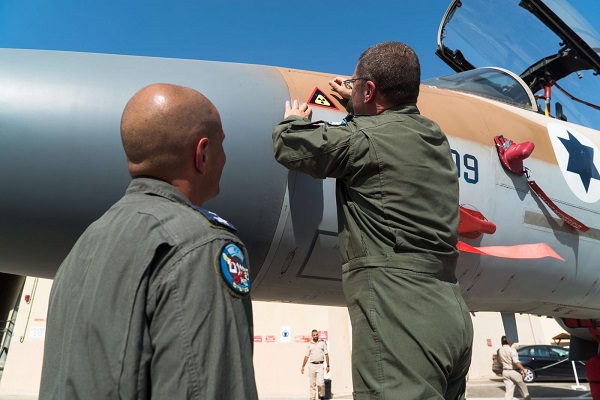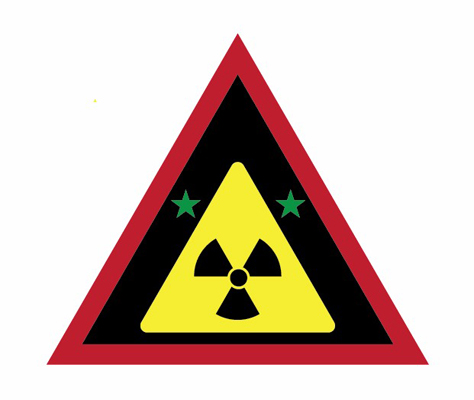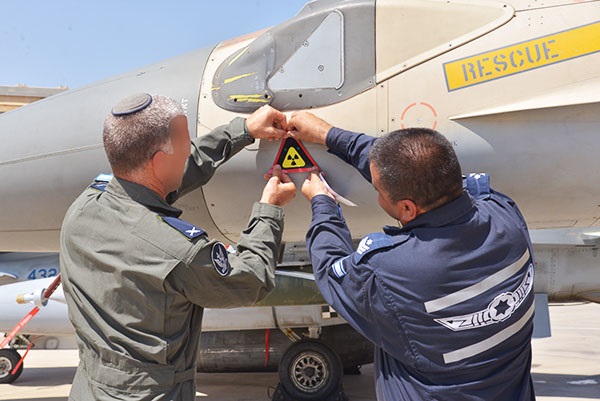Syrian Reactor Mission Markings for the jets involved in the raid.
On Sept. 6, 2007 the Israeli Air Force (IAF) destroyed the nuclear reactor in Dier ez-Zor, Syria as part of an operation named “Silent Tone” (previously unofficially named “Operation Orchard” by international media).
For more than 10 years, Israel never publicly admitted that some of its aircraft destroyed the facility in eastern Syria, even though some details about the clandestine mission leaked throughout the years. Then, on Mar. 21, 2018, the Israeli Air Force published a detailed report on its website providing official confirmation along with some details: the raid was carried out by Israeli Air Force (IAF) 69 Squadron F-15I “Ra’am” (Thunder) and 119 and 253 Squadron F-16I “Sufa” (Storm) jets and an ELINT aircraft: as many as eight aircraft participated and at least four of these crossed into Syrian airspace. The reactor was destroyed as planned shortly before being officially rendered active.
“If the nuclear reactor would have been established successfully, Israel could have shared a border with an enemy state which has nuclear capabilities,” Brig. Gen. A. who took part in the raid flying a Sufa, said in an official release. “Beyond that, the IAF’s operational activity against the Hezbollah terrorist organization and the Iranian military establishment may have been limited by the looming nuclear threat. In addition, the activity in Syria over the past years may have turned out different if it had nuclear capabilities, seeing as they might have landed in the wrong hands. The operation is of indubitable historical importance to both the state of Israel and our neighboring countries”.
On Sept. 6, 2018, 11 years after the successful raid, during a ceremony held at the Israeli Ramon and Hatzerim airbases in parallel – the attacking F-15I aircraft from the 69th (“Hammers”) Squadron and F-16I aircraft from the 253rd (“Negev”) Squadron were given special mission markings that commemorate Operation “Silent Tone”. An additional ceremony will be held on September 14th, at the 119th (“Bat”) Squadron, which operates “Sufa” aircraft as well.

The aircraft were given a decal bearing the operation’s symbol: a triangle, which symbolizes a strike sortie, colored in the Syrian flag’s colors (red, black and white in the background with two green stars), and at its center, a radiation hazard symbol symbolizing the nuclear reactor.
According to the IAF website, the mission markings were imprinted by representatives who participated in the attack, representatives of the technical departments who assisted in the attack and the squadron commanders, Lt. Col. G’ and Lt. Col. R’.

According to the book “The Sword of David – The Israeli Air Force at War” written by Donald McCarthy, the ELINT aircraft that is believed to have supported the raid was a Gulfstream G550 aircraft equipped with the IAI Elta EL/W-2085 radar system by means of that the IAF took over Syria’s air defense systems, feeding them a false sky-picture.
Indeed, the success of the secretive air strike was largely attributed to effectiveness of the Israeli Electronic Warfare platforms that supported the air strike and made the Syrian radars blind. As we have often reported here at The Aviationist, many sources believe that Operation “Silent Tone” also saw the baptism of fire of the Suter airborne network system against Syrian radar systems. Still, since it was not mentioned in the official release, it’s safe to assume the G550 won’t get any mission marking.
Top image: IAF









